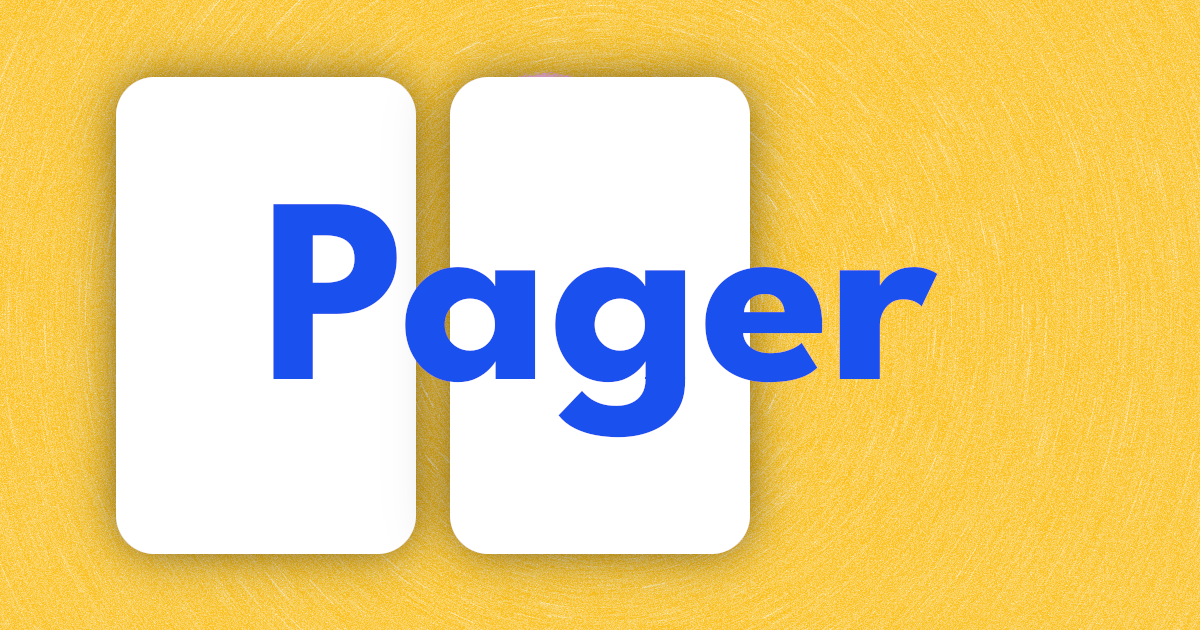Discover the world of PAGER: a comprehensive guide to this reliable and versatile communication tool. Learn about its history, features, benefits, and applications across various industries. Explore why PAGER remains a valuable choice for personal and professional use in today’s digital age.
Introduction
In today’s fast-paced world, efficient communication is paramount. PAGER, a versatile and reliable messaging service, has emerged as a crucial tool for individuals and businesses alike. This blog post will delve into the intricacies of PAGER, exploring its history, features, benefits, and applications.
History of PAGER
The roots of PAGER can be traced back to the early 20th century when pagers were primarily used by medical professionals for emergency communication. However, with advancements in technology, pagers evolved to become more accessible and versatile. By the 1990s, pagers had become a common sight, used by a wide range of individuals, including business executives, students, and travelers.
Features of PAGER
PAGER offers a range of features that make it a valuable communication tool:
- Messaging: PAGER allows users to send and receive text messages, including short codes and group messages.
- Alerts: PAGER can be used to send alerts for various purposes, such as emergency notifications, meeting reminders, or traffic updates.
- Two-Way Communication: Some PAGER models support two-way communication, allowing users to send and receive messages directly.
- Integration with Other Devices: PAGER can be integrated with other devices, such as smartphones and tablets, to enhance its functionality.
Benefits of PAGER
PAGER offers several benefits that make it a popular choice for communication:
- Reliability: PAGER is known for its reliability, especially in areas with poor cellular coverage.
- Efficiency: PAGER messages are typically delivered quickly, making it an efficient communication tool.
- Privacy: PAGER messages are often encrypted, ensuring privacy and security.
- Cost-Effective: PAGER services are generally more affordable than traditional mobile phone plans.
- Versatility: PAGER can be used for a variety of purposes, from personal communication to professional applications.

Applications of PAGER
PAGER has a wide range of applications across various industries:
- Healthcare: PAGER is used by healthcare professionals for emergency communication, patient updates, and administrative tasks.
- Public Safety: PAGER is used by law enforcement, firefighters, and emergency responders for critical communication during emergencies.
- Business: PAGER is used by businesses for internal communication, customer service, and field operations.
- Personal Use: PAGER can be used for personal communication, such as staying in touch with friends and family.
PAGER Statistics and Trends
While the popularity of PAGER has declined in recent years due to the widespread adoption of smartphones, it still remains a valuable communication tool in certain industries and regions. Here are some statistics and trends related to PAGER:
- Global PAGER Usage: According to a recent study, there are approximately 200 million PAGER users worldwide.
- Industry-Specific Usage: The healthcare and public safety sectors continue to be major users of PAGER due to their critical communication needs.
- Emerging Trends: There is a growing trend towards integrating PAGER with other technologies, such as the Internet of Things (IoT), to enhance its capabilities.
Future of PAGER
As technology continues to evolve, it is likely that PAGER will adapt to meet the changing needs of users. While smartphones have become the dominant communication device, PAGER will likely remain relevant in specific industries and scenarios where reliability and efficiency are paramount.
However, PAGER also presents opportunities for growth:
- Niche Markets: There will always be a need for reliable and efficient communication in industries such as healthcare and public safety.
- Cost-Effectiveness: PAGER can be a cost-effective solution compared to smartphones, especially for organizations with limited budgets.
- Technological Integration: The integration of PAGER with other technologies can enhance its capabilities and ensure its relevance in the future.
REASONS WHY
- Smartphone Dominance: Smartphones offer a much broader range of features and capabilities than PAGER, including voice calls, data connectivity, and access to numerous apps.
- Cost-Effectiveness: Smartphones have become more affordable over time, making them a more accessible option for a wider range of users.
- Technological Advancements: New technologies, such as satellite communication and mesh networks, have emerged as alternatives for reliable communication in challenging environments.
- Changing Communication Habits: People’s communication habits have evolved, with a greater emphasis on instant messaging, social media, and video calls.
- Integration with Other Devices: Many smartphones and other devices now have built-in messaging capabilities, reducing the need for standalone PAGER devices.
Despite these factors, PAGER continues to be used in industries where reliability, efficiency, and specialized features are essential. For example, healthcare professionals, emergency responders, and industrial workers may still rely on PAGER for critical communication.

Conclusion
PAGER has a long and storied history, and it continues to be a valuable communication tool in many industries. With its reliability, efficiency, and versatility, PAGER is well-suited for a variety of applications. As technology advances, it is likely that PAGER will continue to evolve and find new ways to serve its users.
DISCLAIMER:
The information provided in this blog post is intended for informational purposes only. While we have made every effort to ensure the accuracy of the content, it is possible that certain details may change or be modified. This blog post does not constitute a recommendation or endorsement of PAGER or any specific PAGER service provider. Readers should conduct their own research and consider their individual needs before making a decision. The views expressed in this blog post are those of the author and do not necessarily reflect the opinions of any other individuals or organizations. The author is not responsible for any errors or omissions in the content. It is important to note that the landscape of communication technology is constantly evolving. The information provided in this blog post may not be applicable to all situations or future developments.




